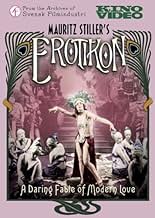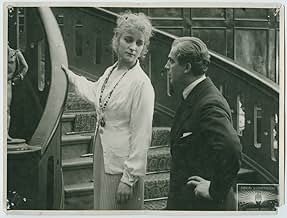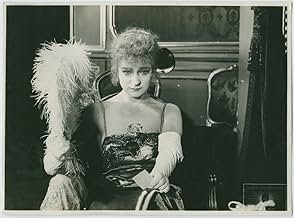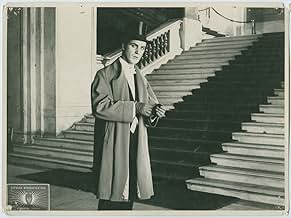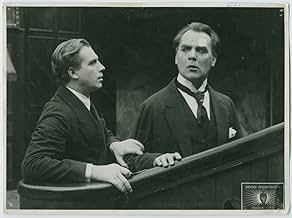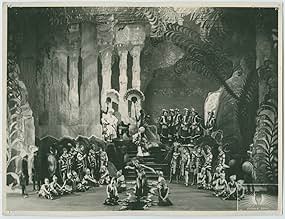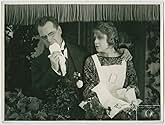PUNTUACIÓN EN IMDb
6,4/10
1,1 mil
TU PUNTUACIÓN
Irene, la esposa aburrida de un entomólogo distraído, persigue a un aviador mujeriego, el mejor amigo de su marido. Mientras tanto, su marido parece volverse inusualmente cercano a su propia... Leer todoIrene, la esposa aburrida de un entomólogo distraído, persigue a un aviador mujeriego, el mejor amigo de su marido. Mientras tanto, su marido parece volverse inusualmente cercano a su propia sobrina.Irene, la esposa aburrida de un entomólogo distraído, persigue a un aviador mujeriego, el mejor amigo de su marido. Mientras tanto, su marido parece volverse inusualmente cercano a su propia sobrina.
- Dirección
- Guión
- Reparto principal
Reseñas destacadas
Huge, dead tree beetles, a long-haired Arabian beauty dancing an erotic, half-naked dance of the veils wearing an exotic peacock-feathered headdress, and a niece who secretly likes to kick up her legs and smoke, makes mutton and cabbage casserole, and flirts with her own uncle - just a few of the things featured in this somewhat weird, but interesting, and even, at times, mildly amusing silent film. The film is about Leo, a professor of entomology and his tired-looking, bored "touched with melancholy" wife Irene, who has a crush on her husband's best friend, a handsome sculptor named Preben (Lars Hanson). Preben is in love with Irene as well, but holds back because of his friendship with her husband. Meanwhile, Leo flirts with, of all things, his own niece (and she must be a blood relative as she has the same last name as him!). Jealousies ensue.
I thought the film was pretty well done and enjoyable, though a bit slow in parts. The music score that accompanies this film didn't really suit the story very well and was pretty heavy and gloomy for most of the film - in fact, it was really getting on my nerves (not in a good way) for the last half hour or so. The music did suit the story in a few places though - namely, a scene where they attend the opera to see this fantasy ballet featuring the on-stage tale of a Shah and his beautiful "favorite wife", and my favorite scene in the film - an interesting bit of photography in which Irene takes a flight with another of her flirtations, Baron Felix, and we watch their little plane as it sours through the air, Irene's scarf flying in the open air cockpit, and camera strapped to the wings as it looks through the moving clouds to the landscape below. Well done. The print of this looked very good, tinted in most scenes a sort of bright yellow-brown shade.
I thought the film was pretty well done and enjoyable, though a bit slow in parts. The music score that accompanies this film didn't really suit the story very well and was pretty heavy and gloomy for most of the film - in fact, it was really getting on my nerves (not in a good way) for the last half hour or so. The music did suit the story in a few places though - namely, a scene where they attend the opera to see this fantasy ballet featuring the on-stage tale of a Shah and his beautiful "favorite wife", and my favorite scene in the film - an interesting bit of photography in which Irene takes a flight with another of her flirtations, Baron Felix, and we watch their little plane as it sours through the air, Irene's scarf flying in the open air cockpit, and camera strapped to the wings as it looks through the moving clouds to the landscape below. Well done. The print of this looked very good, tinted in most scenes a sort of bright yellow-brown shade.
Anders de Wahl is a distinguished entomologist writing papers about the polygamous lives of beetles. Tora Teje is his wife who has lovers, of whom de Wahl is stodgily unaware. One of them should be Lars Hanson, but he has scruples about sleeping with his best friend's wife. There's also Karin Molander as Miss Teje's niece, who captivates all of de Wahl's students, and Vilhelm Bryde as Miss Teje's current plaything, of whom she is growing tired.
Mauritz Stiller's movie should be familiar to film buffs who like Demille; the set-up is very much like the social comedies he was making at the time, minus the Christian ending and the lavish flashbacks -- although there is a sequence dropped in, in which they are all at the ballet watching a piece about a woman who wants to have a fling with her husband's best friend. The camerawork is not as lavish, but the editing is so good that the movie moves along smoothly, with never a bump when it takes an unexpected turn.
The ultimate unexpected turn is that it's all right. In the end, everyone still likes everyone else, but there's no message about this is the way things are supposed to be, forever and amen. Sometimes we make mistakes, and if we can fix them, everyone will be happier. Of course Stiller chooses his details carefully so his message is reinforced, but that's an artist's prerogative. He certainly has a movie here that, as de Wahl remarks, agrees with the movie-going public: a happy ending for all.
Mauritz Stiller's movie should be familiar to film buffs who like Demille; the set-up is very much like the social comedies he was making at the time, minus the Christian ending and the lavish flashbacks -- although there is a sequence dropped in, in which they are all at the ballet watching a piece about a woman who wants to have a fling with her husband's best friend. The camerawork is not as lavish, but the editing is so good that the movie moves along smoothly, with never a bump when it takes an unexpected turn.
The ultimate unexpected turn is that it's all right. In the end, everyone still likes everyone else, but there's no message about this is the way things are supposed to be, forever and amen. Sometimes we make mistakes, and if we can fix them, everyone will be happier. Of course Stiller chooses his details carefully so his message is reinforced, but that's an artist's prerogative. He certainly has a movie here that, as de Wahl remarks, agrees with the movie-going public: a happy ending for all.
I have to admit at times I was thinking ... is this really a century old? It did feel like someone made a movie and made it look like it was ... "old". Especially considering some of the themes depicted here - you wouldn't think that a movie of that time would have women in such big roles. Movies after this had less female centric things going for them.
All that aside, this is a silent movie. Which while I have seen quite a few - it had been a while. So yes there is music, but all the dialog (well the dialog that is deemed necessary to be truthful) is being displayed on cards between scenes. Since it isn't an english movie the cards had subtitles ... I reckon I could have seen a version where they already had english cards ... but the streaming service that had the movie on did use the original cards. Just putting that information out there for those interested.
A strange movie in many respects. But an intriguing and intersting one, if you are able to take into account when this was shot ... and the context of that time and how much more it must have meant back then.
All that aside, this is a silent movie. Which while I have seen quite a few - it had been a while. So yes there is music, but all the dialog (well the dialog that is deemed necessary to be truthful) is being displayed on cards between scenes. Since it isn't an english movie the cards had subtitles ... I reckon I could have seen a version where they already had english cards ... but the streaming service that had the movie on did use the original cards. Just putting that information out there for those interested.
A strange movie in many respects. But an intriguing and intersting one, if you are able to take into account when this was shot ... and the context of that time and how much more it must have meant back then.
Though critically acclaimed, this 1920 film is interesting only from a historical perspective. It was directed notably by the great Swedish director Mauritz Stiller (he was actually a Jew from Finland), who had already directed dozens of films and was a master of his craft. Although he was yet to create his masterpiece The Saga of Gosta Berling, he would only direct a handful of films before his failed residency in Hollywood and premature death in 1928. Also worthy of mention is the film's male lead, a premiere Swedish actor, Lars Hanson, who would famously star several times with Stiller's great discovery Greta Garbo. Erotikon, though, scarcely lives up to its salacious title. It may have been somewhat daring in 1920, but today it is less apt to raise eyebrows than to close eyelids. There must have been a hundred silent features that would deal more compellingly with the theme of the errant wife and the dull husband. While there is no question Stiller has grasped the art of motion picture making -- the acting and camera-work and editing are polished and some of the title cards are witty, artistically the film is a disappointment. Even for one accustomed to the conventions of silent films, it is painfully slow and devoid of arresting incident. Only the unconventional ending (which I won't divulge) somewhat saves it. And the nicely restored Kino version unhappily features a musical score which does little to arise audience interest or connection to the plot. Its atrocious fiddle-scraping may be apt for the contemplation of suicide, but after a half hour or so its annoying discordance becomes unbearable and anyone of auditory sensibilities will soon be reduced to viewing this feature in grateful silence.
With a racy plot for the time that would have made Sade proud, "Erotikon" pushed boundaries on how far film can challenge tradition and shake social mores. Not only a fascinating glimpse of Sweden during the time, this is also a compelling relic on the country's importance and relevance in the history of film. While constrained by the limitations of its time, "Erotikon" is an interesting glimpse on history and cinema's contribution to greater social and artistic change.
¿Sabías que...?
- ConexionesFeatured in Cinema Europe: The Other Hollywood (1995)
Selecciones populares
Inicia sesión para calificar y añadir a tu lista para recibir recomendaciones personalizadas
- How long is Erotikon?Con tecnología de Alexa
Detalles
- Duración1 hora 46 minutos
- Color
- Mezcla de sonido
- Relación de aspecto
- 1.33 : 1
Contribuir a esta página
Sugerir un cambio o añadir el contenido que falta

Principal laguna de datos
What is the English language plot outline for Cuando ellas quieren (1920)?
Responde
